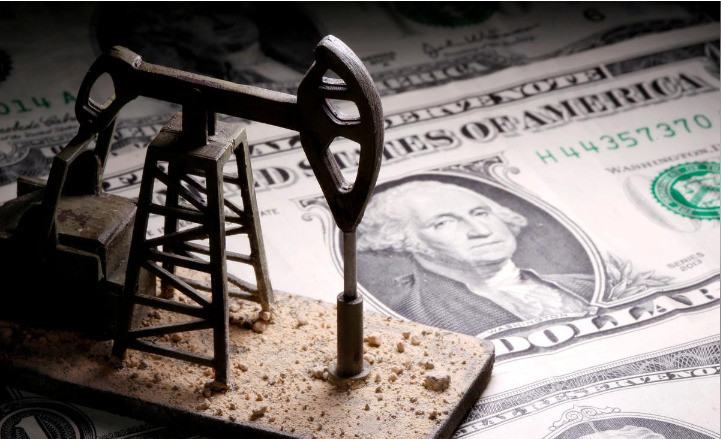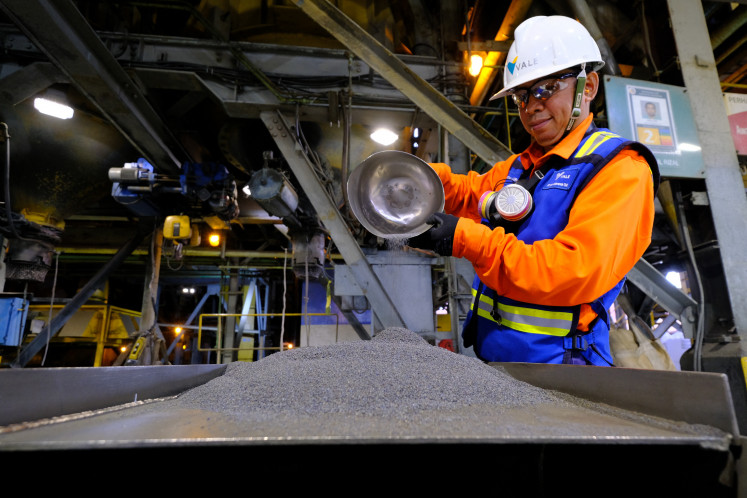Popular Reads
Top Results
Can't find what you're looking for?
View all search resultsPopular Reads
Top Results
Can't find what you're looking for?
View all search resultsOil prices get big impetus from supply cuts
While general euphoria around the world’s emergence from COVID-19 and demand recovery are factors, a big impetus to prices has come from a combination of voluntary and involuntary supply cuts.
Change text size
Gift Premium Articles
to Anyone
O
il prices have cemented their march up led by a combination of supply cuts and quicker-than-expected demand recovery as economies gradually reopen for business. But high stock levels, a potential return of shut-in production and uncertainty around demand recovery are likely to cap upside.
ICE Brent futures have nearly doubled to above US$40/barrel since hitting a multi-decade low in mid-April.
While general euphoria around the world’s emergence from COVID-19 and demand recovery are factors, a big impetus to prices has come from a combination of voluntary and involuntary supply cuts.
The Organization of Petroleum Exporting Countries (OPEC)+ coalition of OPEC, Russia and nine other allies agreed to implement the biggest coordinated production cut – 9.7 million b/d – in the market's history in May and June to combat the demand destruction unleashed by COVID-19.
This was meant to be scaled back to 7.7 million b/d in the second half of 2020, but the group decided on June 6 to extend the deeper production cuts into July to speed up the rebalancing of the market.
Going forward, a monitoring committee led by OPEC+ kingpins, Saudi Arabia and Russia, will meet monthly through the end of the year to stay abreast of market developments and recommend any adjustments to the deal.
The monthly meetings are necessary as the group faces a tough balancing act -- pump too much too quickly and risk another price collapse, or pump too little too late and risk a price hike that could bring high cost producers, such as US shale, back in the game and re-ignite a battle for market share when demand is still low.
In the United States, output is now down 1.9 million b/d from its mid-March record high of 13.1 million b/d, according to data from the US Energy Information Administration, but the recent rise in oil prices has already got some shale producers planning a restart of production from the third quarter.
“Global oil supply is set to decline by over 14 million b/d from April to June, on strong compliance with the OPEC+ deal, other non-OPEC responses. But shut in barrels will start to return heavily in July, although a full recovery will take time. We now see global oil supply contracting by 7 million b/d year on year in 2020,” Shin Kim, head of supply and production analytics, S&P Global Platts said in a recent note.
The group will also closely monitor compliance among members.
“Admittedly, compliance could wane faster than we forecast [as prices rise], but the opposite looks more likely. Saudi Arabia and Russia have clearly demonstrated their commitment,” Paul Sheldon, chief geopolitical adviser at Platts Analytics said.
“Full Iraqi compliance remains unlikely, due to both contractual complications as well as a dire need for revenue. However, efforts by Saudi Arabia and Russia to hold Iraq and other smaller producers’ feet to the fire will likely have an impact,” he said.
Demand recovery has been quicker than originally anticipated, but a possible second wave of infections poses a key risk here.
According to Platts Analytics, demand in May is estimated to have gone up by nearly 4 million b/d over April though remained some 17 million b/d below May 2019 levels and further month on month improvements in demand each month is expected for the June-August period.
Major Asian crude importers China, Japan and South Korea are showing signs of returning demand as coronavirus-linked restrictions on work and travel relax.
Traffic on roads and highways has increased in South Korea, pointing to a recovery in gasoline demand. Crude demand from China is recovering ahead of the rest of Asia and expected to continue at an upbeat pace during June and July, traders based in the country have told S&P Global Platts.
Barring the global hit of second wave COVID-19 during the latter half of this year, Platts Analytics sees an annual demand decline of 8.4 million b/d for 2020 as a whole. Demand in Asia for the whole year is likely to be 1.9 million b/d below that of 2019.
“We are not overly bullish as much anxiety persists, particularly around demand and the impact of opening up from lockdowns on the infection rate … There is the potential impact of a second wave of COVID-19 infections that could reverse oil demand improvements expected in coming months just as bloated stocks start to draw,” Kim said.
“Nevertheless, the current supply losses, OPEC’s determination, and trend towards opening up point to stronger oil prices than we believed earlier,” she added.
***
The writer is head of news-Asia at S&P Global Platts.










